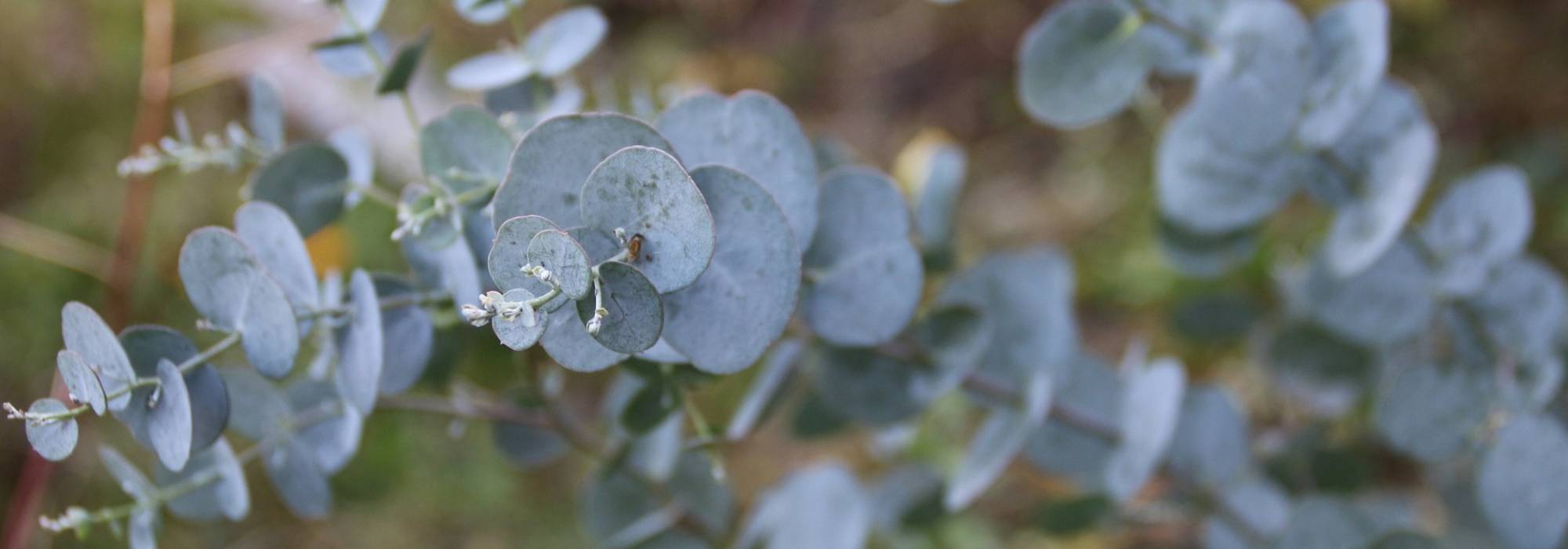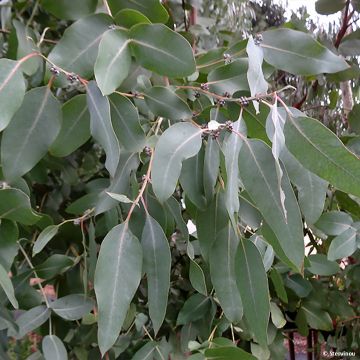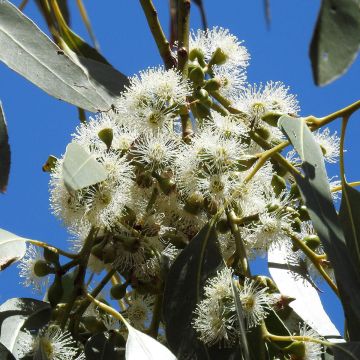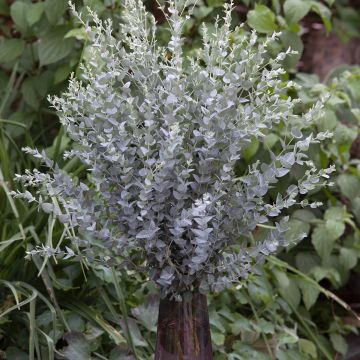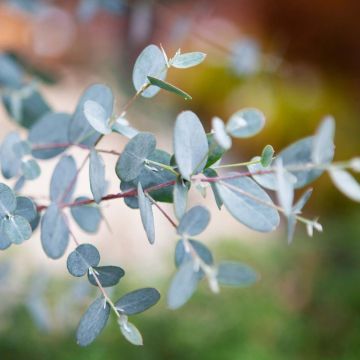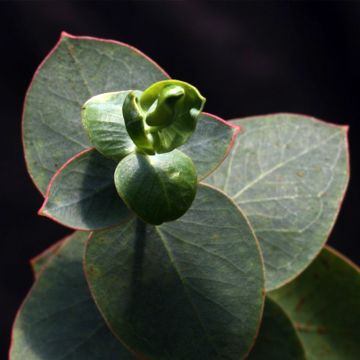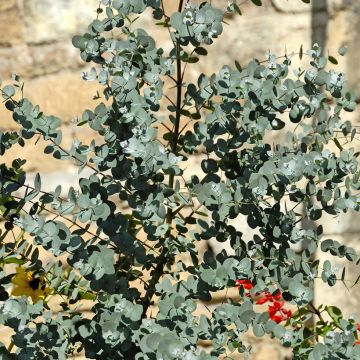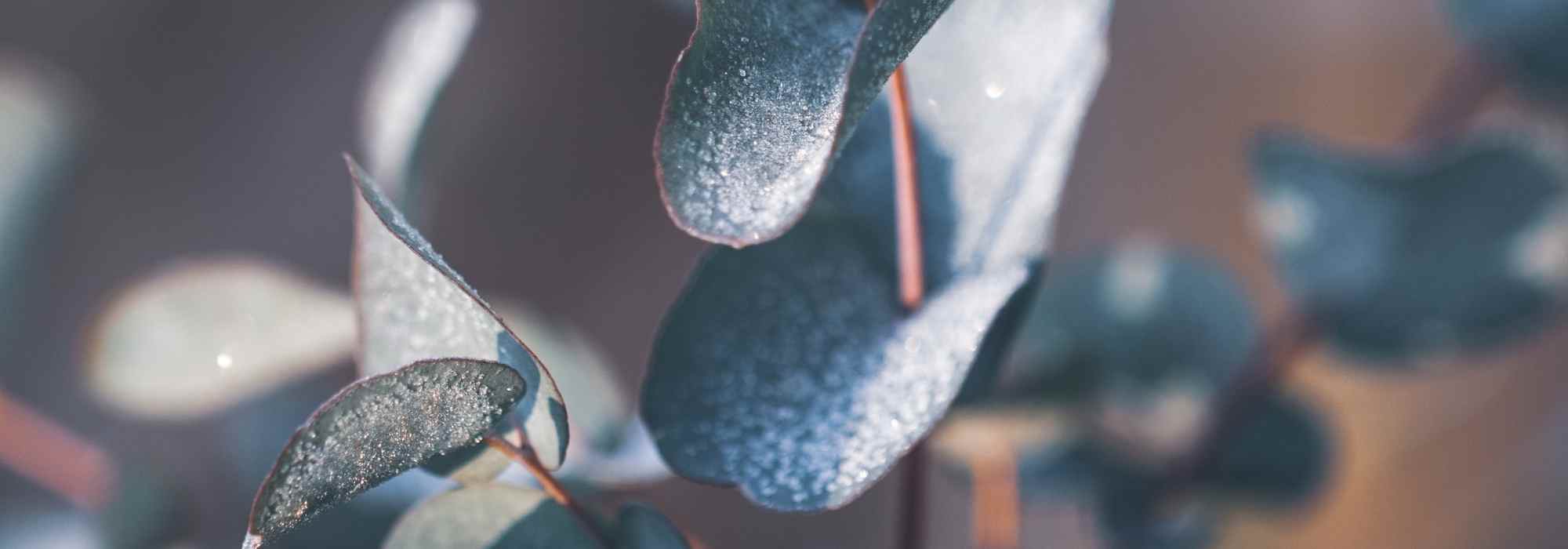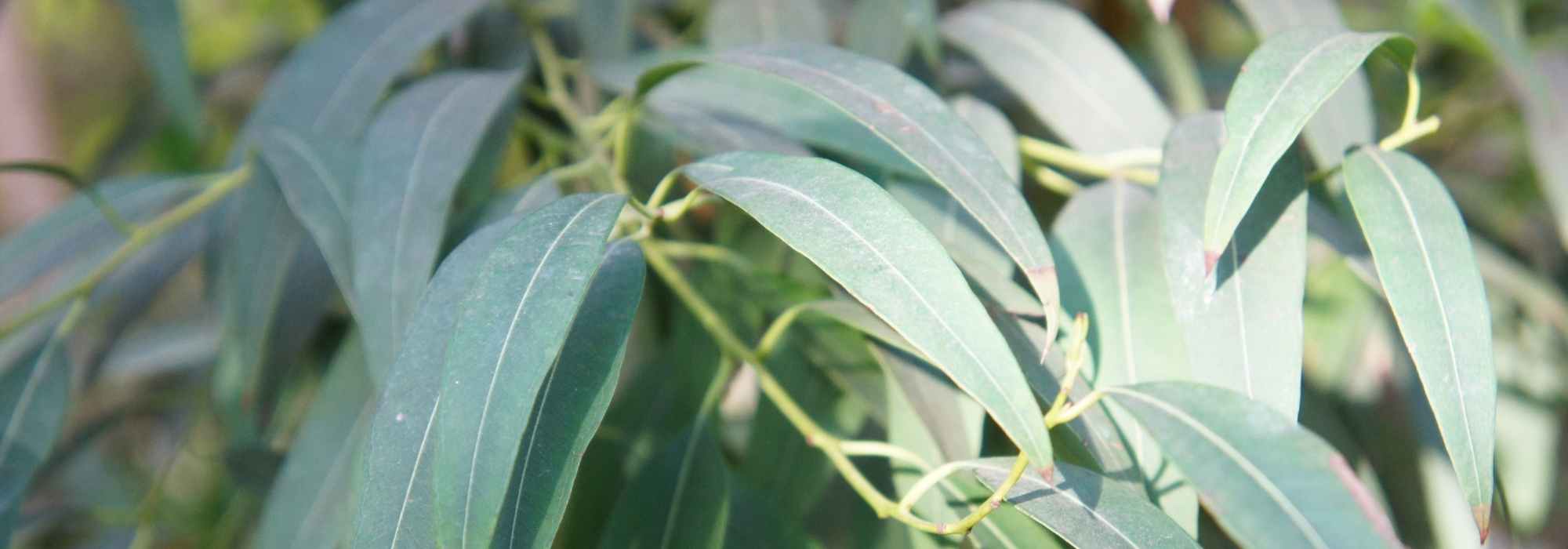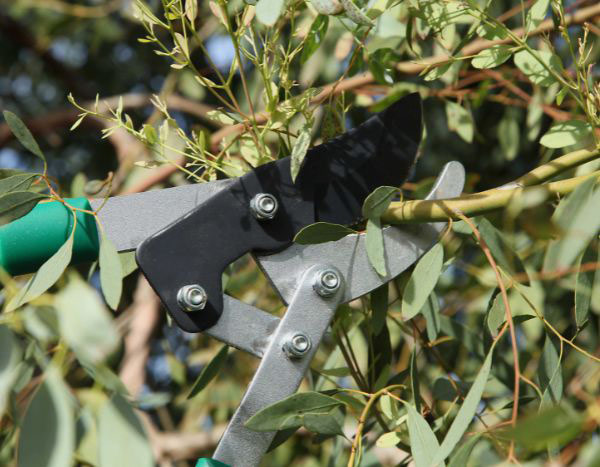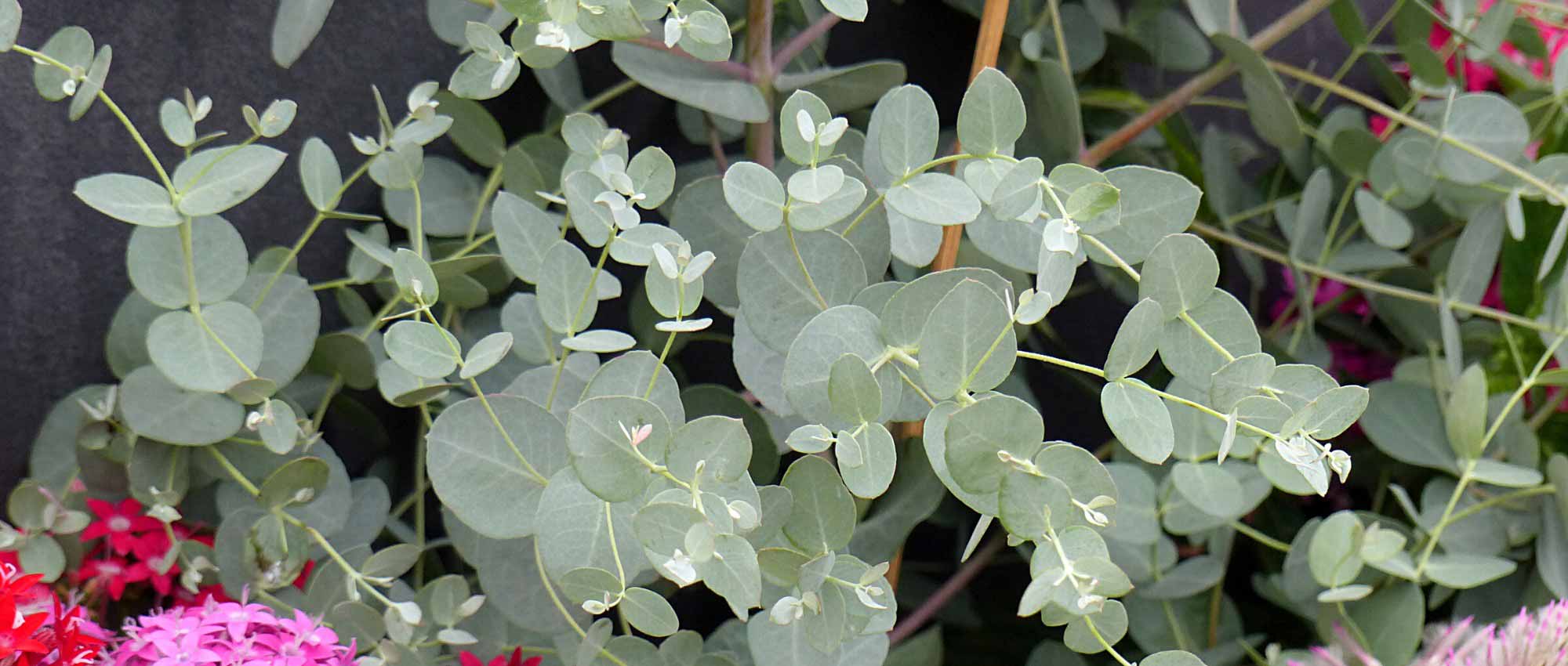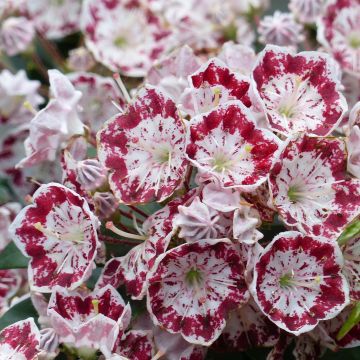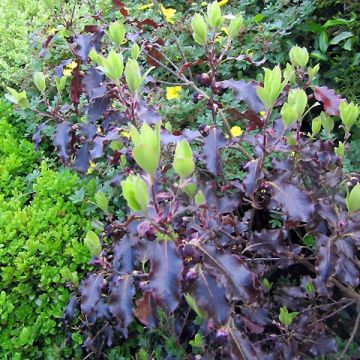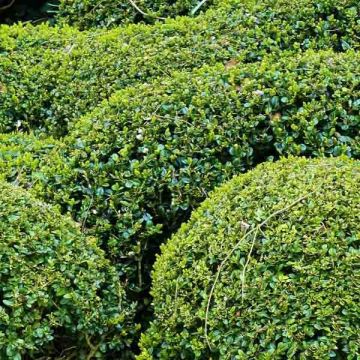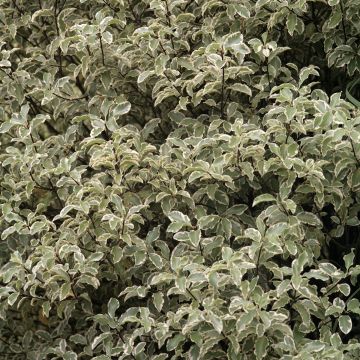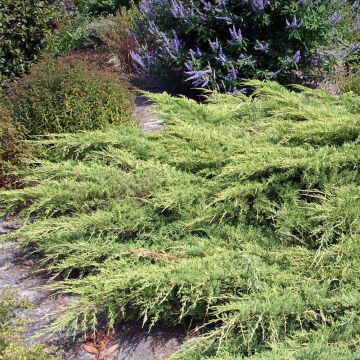

Eucalyptus johnstonii
Eucalyptus johnstonii
Eucalyptus johnstonii
Tasmanian yellow gum
Special offer!
Receive a €20 voucher for any order over €90 (excluding delivery costs, credit notes, and plastic-free options)!
1- Add your favorite plants to your cart.
2- Once you have reached €90, confirm your order (you can even choose the delivery date!).
3- As soon as your order is shipped, you will receive an email containing your voucher code, valid for 3 months (90 days).
Your voucher is unique and can only be used once, for any order with a minimum value of €20, excluding delivery costs.
Can be combined with other current offers, non-divisible and non-refundable.
Home or relay delivery (depending on size and destination)
Schedule delivery date,
and select date in basket
This plant carries a 24 months recovery warranty
More information
We guarantee the quality of our plants for a full growing cycle, and will replace at our expense any plant that fails to recover under normal climatic and planting conditions.
Would this plant suit my garden?
Set up your Plantfit profile →
Description
Eucalyptus johnstonii lives up to its name of Tasmanian Yellow Gum with its predominantly yellow, but also orange-brown or pale green, smooth bark. Its mountain origins give it vigour and robustness, but also an excellent ability to resist cold, going down to -15 °C. This beautiful evergreen tree, with fairly rapid growth, quickly takes on the posture of a fine specimen, requiring little and attractive all year round. In the garden, it requires a suitable location, in full sun, in acidic or neutral, moist, well-drained soil, not too dry in summer. The young, very colourful and aromatic foliage, is very popular in floral composition.
Eucalyptus johnstonii is an endemic species of south-east Tasmania, on Mount Wellington, Bruny Island, Tasman Peninsula. In these high regions, at an altitude of 500 to 1000 metres (1640 feet 5 inches to 3280 feet 10 inches), in the high forests of the mountains and on the high plateaus, it develops on peaty and sandy soils, poorly drained, temporarily flooded, exposed to quite harsh climatic conditions (rain, winds, frosts). Belonging to the Myrtaceae family, it is commonly called Tasmanian Yellow Gum. It was described in 1922 by Joseph Maiden (1859-1925), a British botanist and the name johnstonii, honours the passionate geologist and botanist, Robert MacKenzie Johnston (1845-1918).
This eucalyptus forms a tree, with an erect habit, with a straight trunk, but dwarfed and stunted at high altitude, bearing numerous branches with flexible and pendulous shoots. In its natural habitat, it reaches a height of 40 to 50 m (131 ft 2 in to 164 ft) and 10 to 20 m (32 ft 10 in to 65 ft 7 in) in spread. In our climates, its more moderate size hardly exceeds 20 m (65 ft 7 in) in height. With fairly rapid growth, it rises on one or several trunks starting from a lignotuber* located just below the soil surface. When young, it displays brown to reddish shoots, bearing juvenile foliage, composed of ovate leaves 3 to 6 cm (1.2 to 2.4 in) long by 2 to 4 cm (0.8 to 1.6 in) wide, and shiny green. Then as it develops, the leaves take on a lanceolate to crescent shape, 7 to 15 cm (2.8 to 5.9 in) long by 2 to 4 cm (0.8 to 1.6 in) wide, shiny green. The leaves are tough, slightly aromatic and release a menthol scent when crushed, rich in eucalyptol. As it ages, the bark peels off in thin flakes, revealing a smooth underlayer, yellow to brownish or greenish. Flowering occurs from February to April in our climates, on plants a few years old. The inflorescence, arranged in the leaf axil, is composed of three small white flowers gathered in a tight bouquet, delicately scented and very attractive to bees. After flowering, the fruits, called "gumnut", appear in the form of a woody capsule, globular, truncate, attached to the branch by a short petiole. They are a beautiful whitish-grey colour and remain attached to the stem for a long time.
This eucalyptus has a *lignotuber, constituted by a swelling rich in starch that forms on the roots just below the soil surface. This organ allows it to grow again from the stump in the event of severe frost, fire or pruning to the ground. The plant also produces numerous shoots from dormant buds located under its bark, which allows it to respond well to cutting back, topping or more severe pruning.
The Tasmanian Yellow Gum finds a place in the garden planted alone in a clear space to appreciate the beauty of its bark and the elegance of its foliage. In order to highlight its architectural habit, it is trained on one or several trunks. It tolerates both semi-mountain and semi-arid climates in summer, and its resistance to cold will go down to -15°C. Note that this Eucalyptus, native to the high plateaus and alpine regions of Tasmania, tolerates peaty and sandy soils, even regularly waterlogged. It is therefore comfortable in moist, but not swampy soils, which it has the ability to dry out.
Plant habit
Flowering
Foliage
Botanical data
Eucalyptus
johnstonii
Myrtaceae
Tasmanian yellow gum
Australia
Other Eucalyptus
View all →Planting and care
Eucalyptus johnstonii is best planted at the beginning of spring in cold regions, at the beginning of autumn in dry and hot climates. Install it in well-prepared soil, not too dry to moist, in a very sunny situation. Clayey or silty soils, even chalky are tolerated. A well-established specimen is hardy down to -12 °C in these conditions and will tolerate snow. Young plants are more sensitive to heavy frosts, especially if the frost sets in for several days and the soil is wet. In most regions, you can plant it in open ground, ensuring good drainage by adding coarse sand, pozzolan or non-chalky gravel. Then let nature take its course, the growth is rapid.
For the first two years, continuous watering is necessary, then the bush can do without watering in summer. Fertiliser is not recommended. Pruning is not necessary, to let the unique habit of this superb eucalyptus express itself. However, it is well tolerated after flowering. It is possible to form the eucalyptus on a single trunk, by selecting the best placed one and cutting all the others flush. And it is possible to cut back this small tree to form a large bush whose height you can limit.
Young plants are most easily established in open ground. The deep root system of the Eucalyptus does not like to be disturbed. Choose its location carefully
The mountain species are useful for their hardiness, but they dislike heatwaves and overly dry soils.
Planting period
Intended location
Care
Planting & care advice
This item has not been reviewed yet - be the first to leave a review about it.
Similar products
Haven't found what you were looking for?
Hardiness is the lowest winter temperature a plant can endure without suffering serious damage or even dying. However, hardiness is affected by location (a sheltered area, such as a patio), protection (winter cover) and soil type (hardiness is improved by well-drained soil).

Photo Sharing Terms & Conditions
In order to encourage gardeners to interact and share their experiences, Promesse de fleurs offers various media enabling content to be uploaded onto its Site - in particular via the ‘Photo sharing’ module.
The User agrees to refrain from:
- Posting any content that is illegal, prejudicial, insulting, racist, inciteful to hatred, revisionist, contrary to public decency, that infringes on privacy or on the privacy rights of third parties, in particular the publicity rights of persons and goods, intellectual property rights, or the right to privacy.
- Submitting content on behalf of a third party;
- Impersonate the identity of a third party and/or publish any personal information about a third party;
In general, the User undertakes to refrain from any unethical behaviour.
All Content (in particular text, comments, files, images, photos, videos, creative works, etc.), which may be subject to property or intellectual property rights, image or other private rights, shall remain the property of the User, subject to the limited rights granted by the terms of the licence granted by Promesse de fleurs as stated below. Users are at liberty to publish or not to publish such Content on the Site, notably via the ‘Photo Sharing’ facility, and accept that this Content shall be made public and freely accessible, notably on the Internet.
Users further acknowledge, undertake to have ,and guarantee that they hold all necessary rights and permissions to publish such material on the Site, in particular with regard to the legislation in force pertaining to any privacy, property, intellectual property, image, or contractual rights, or rights of any other nature. By publishing such Content on the Site, Users acknowledge accepting full liability as publishers of the Content within the meaning of the law, and grant Promesse de fleurs, free of charge, an inclusive, worldwide licence for the said Content for the entire duration of its publication, including all reproduction, representation, up/downloading, displaying, performing, transmission, and storage rights.
Users also grant permission for their name to be linked to the Content and accept that this link may not always be made available.
By engaging in posting material, Users consent to their Content becoming automatically accessible on the Internet, in particular on other sites and/or blogs and/or web pages of the Promesse de fleurs site, including in particular social pages and the Promesse de fleurs catalogue.
Users may secure the removal of entrusted content free of charge by issuing a simple request via our contact form.
The flowering period indicated on our website applies to countries and regions located in USDA zone 8 (France, the United Kingdom, Ireland, the Netherlands, etc.)
It will vary according to where you live:
- In zones 9 to 10 (Italy, Spain, Greece, etc.), flowering will occur about 2 to 4 weeks earlier.
- In zones 6 to 7 (Germany, Poland, Slovenia, and lower mountainous regions), flowering will be delayed by 2 to 3 weeks.
- In zone 5 (Central Europe, Scandinavia), blooming will be delayed by 3 to 5 weeks.
In temperate climates, pruning of spring-flowering shrubs (forsythia, spireas, etc.) should be done just after flowering.
Pruning of summer-flowering shrubs (Indian Lilac, Perovskia, etc.) can be done in winter or spring.
In cold regions as well as with frost-sensitive plants, avoid pruning too early when severe frosts may still occur.
The planting period indicated on our website applies to countries and regions located in USDA zone 8 (France, United Kingdom, Ireland, Netherlands).
It will vary according to where you live:
- In Mediterranean zones (Marseille, Madrid, Milan, etc.), autumn and winter are the best planting periods.
- In continental zones (Strasbourg, Munich, Vienna, etc.), delay planting by 2 to 3 weeks in spring and bring it forward by 2 to 4 weeks in autumn.
- In mountainous regions (the Alps, Pyrenees, Carpathians, etc.), it is best to plant in late spring (May-June) or late summer (August-September).
The harvesting period indicated on our website applies to countries and regions in USDA zone 8 (France, England, Ireland, the Netherlands).
In colder areas (Scandinavia, Poland, Austria...) fruit and vegetable harvests are likely to be delayed by 3-4 weeks.
In warmer areas (Italy, Spain, Greece, etc.), harvesting will probably take place earlier, depending on weather conditions.
The sowing periods indicated on our website apply to countries and regions within USDA Zone 8 (France, UK, Ireland, Netherlands).
In colder areas (Scandinavia, Poland, Austria...), delay any outdoor sowing by 3-4 weeks, or sow under glass.
In warmer climes (Italy, Spain, Greece, etc.), bring outdoor sowing forward by a few weeks.






























